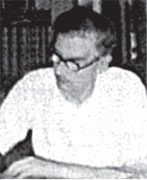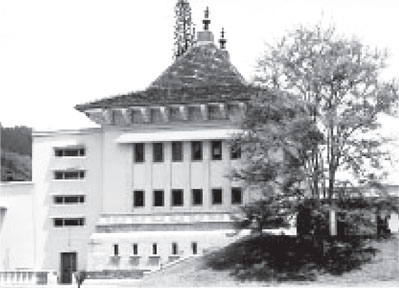University of Ceylon in pre and post independence era
by Rupa Banduwardena
Going back to its beginnings in the pre-independence era, it will be
of immense use to know the historical background that led to the
emergence of the most prestigious institution, the University of Ceylon,
Peradeniya, noted for its historic glory and cultural heritage. It will
be of great importance to the past as well as the present generation of
undergrads to go back to the scenario that brought about the origin of
this unique institution.
 |
|
Sir Ivor Jennings |
Its rich historic legacy is keenly felt even today, in its atmosphere
as a worthy institution which has a surprising way of living for decades
as it was originally created. Its stature possesses such power that any
passer-by or any fresher might want to delve deep into the past. The
honour of preserving it to-date is taken over by the time factor and the
mighty tradition.
One could say that the university was an outcome of imperialism which
we experienced till we gained independence. University education in its
initial stages was mostly governed by political considerations during
the early colonial rule. The education policy then was determined
according to the financial resources of the colony and the creation of a
university was not given attention until after they stabilised their
power in the island.
The need for a university arose much later. The Colombo Academy
created in 1853, affiliated to the University of Calcutta was renamed
Royal College in 1881. It enabled the students to sit London University
external degree examinations. It was during that time that several
colleges established by the religious missionaries, Christian as well as
Buddhist, provided the opportunity to go for higher education.
Their devoted attention leading to excellence in studies elevated the
colleges to prestigious positions. The secondary schools thus emerged
were producing students who had to be provided with higher education,
culminated in the demand for university education.
New era
At the same time a new era was going to be witnessed. The Legislative
Council as far back as 1870 which truly opposed the earlier mentioned
affiliation preferred the British Universities to Indian ones. As it was
discontinued, the affluent, just a handful, were happy to educate their
children in the United Kingdom. Education then was in the English medium
confined to the rich. Fees were charged and university education was
beyond the reach of the average. Yet the general opinion of the wealthy
was that a local seat of higher learning was a dire necessity.
The executive council having discussed the matter, adopted a
resolution for the establishment of a University College, so that those
who are anxious, could do a degree without proceeding to the UK. The
outcome was a University College affiliated to the University of London
which was of no value to the professional elite who were clamouring for
an academic model that would make a meaningful contribution to the
forward march of the country. It was against that backdrop that there
emerged a legendary University of Ceylon. Thus began the great edifice
that has spread to many parts of the island as a network continuing to
this day.
Origin
The University of Ceylon was set up in Colombo, under the British in
1942 until the premises were prepared at Peradeniya. At this juncture,
Dr. C.W.W. Kannangara, respected as the Father of Free Education, during
his tenure as the Minister of Education in the State Council (1931 to
1947) brought about a drastic change in the sphere of education. Along
with his greatest contribution – the Free Education scheme, the
establishment of the Peradeniya University, the concept of Central
Schools opened the doors of higher education to the poor and the
talented.
Rural intelligentsia
Thanks to the sincere efforts of the doyen of education, the way was
thus paved for the clever, rural intelligentsia to reap the benefits of
university education. Now on the completion of the first phase of the
University at Peradeniya in 1952, after ten years’ stay in Colombo, the
first residential university commenced with the arrival of 820 students
of the Arts and Oriental faculties. I do still remember how the most
esteemed journal widely read, even at that time, the Daily News carried
the photograph of their departure to Peradeniya by train.
 It was a happy occasion for the then University Entrance students to
watch the scene. They arrived at the “haven on earth”, the newly
constructed majestic university of regal splendour, in a picturesque,
scenic location with greenery all round, founded by the intellectual
genius – Sir Ivor Jennings. It was a happy occasion for the then University Entrance students to
watch the scene. They arrived at the “haven on earth”, the newly
constructed majestic university of regal splendour, in a picturesque,
scenic location with greenery all round, founded by the intellectual
genius – Sir Ivor Jennings.
Whatever this may mean, it cannot be denied that this magnificent
seat of learning owes its origin to the colonial masters and its legacy
lives on.
When it was first inaugurated it was a true wonder and it was the
best ever, in this part of the globe. Beautiful memories must be still
alive in their hearts and minds. It was set up on the British University
model (Oxford, Cambridge) described as the best in the British Empire,
following a steady upward journey towards academic excellence. The Tudor
style halls of residence were still another example.
My memories flashback to our first day in the campus. My friends to
this day – Padmini, Winnie, Shiva, Beatrice and Chandra when going for a
walk in the cool breezy evening, I vividly remember how we met late Dr.
Horace Perera, the father figure in History, during our student days.
The first question he put to us was “Do you feel yourself important?” Of
course, that was a wonderful question that enhanced our first
impression. Having served the motherland in numerous ways, living in
retirement, in Switzerland, in his mid 90s he has passed away. May his
soul Rest in Peace.
One time glory of the university, still linger in our hearts. It
proved its value as the highest academic institution.
Study programs and curriculum then, was the most advanced on par with
modern trends and methods, in addition to the excellent facilities
provided. There was the strong tradition of quality in every aspect. In
short, the University of Ceylon offered the best for everyone.
New era
The decade beginning with 1960 marked the new era. The wealthy and
the privileged that dominated the university scene, after independence
gradually decreased. It came to be centred on truly bright and
intelligent. The introduction of free education system led to the
admission of Swabasha medium students who had to exist with the English
speaking elite for sometime.Competition to seek admission became a
feature as the State University could accommodate only a limited number,
the concept of external students too had to be considered. On the whole,
the role of the university too had to be changed taking many progressive
steps to suit the emerging needs in the post independence era.
This led to the expansion, extending a historic service, laying the
foundation for a network to serve the country. At present it offers
education in all major disciplines equivalent to any major university in
the globe. The Mahapola Scholarship scheme, the brainchild of the late
Lalith Athulathmudali, opened the doors to the intelligent but
economically backward students for university education.
The colourful history of the university of Ceylon does not end here.
It has touched the hearts and minds of thousands uncountable, with a
deep sense of affection, which is evident from the writer herself.
|



